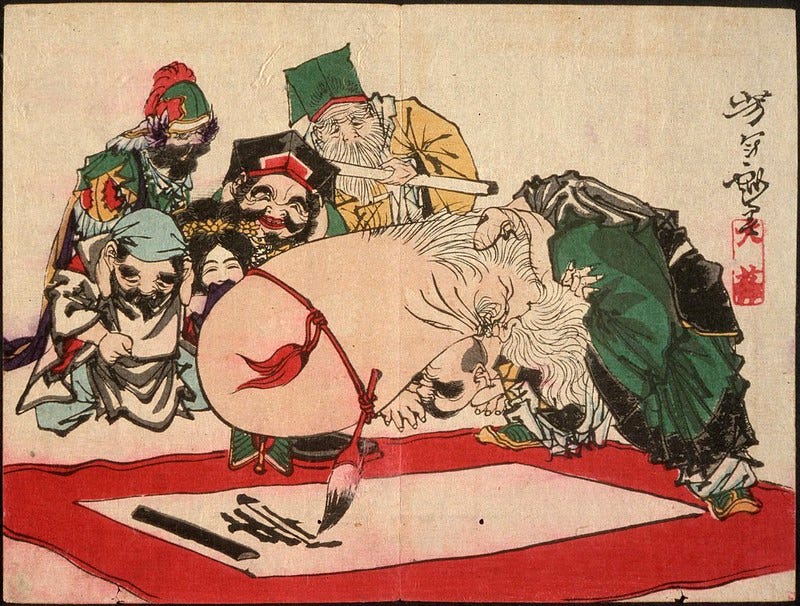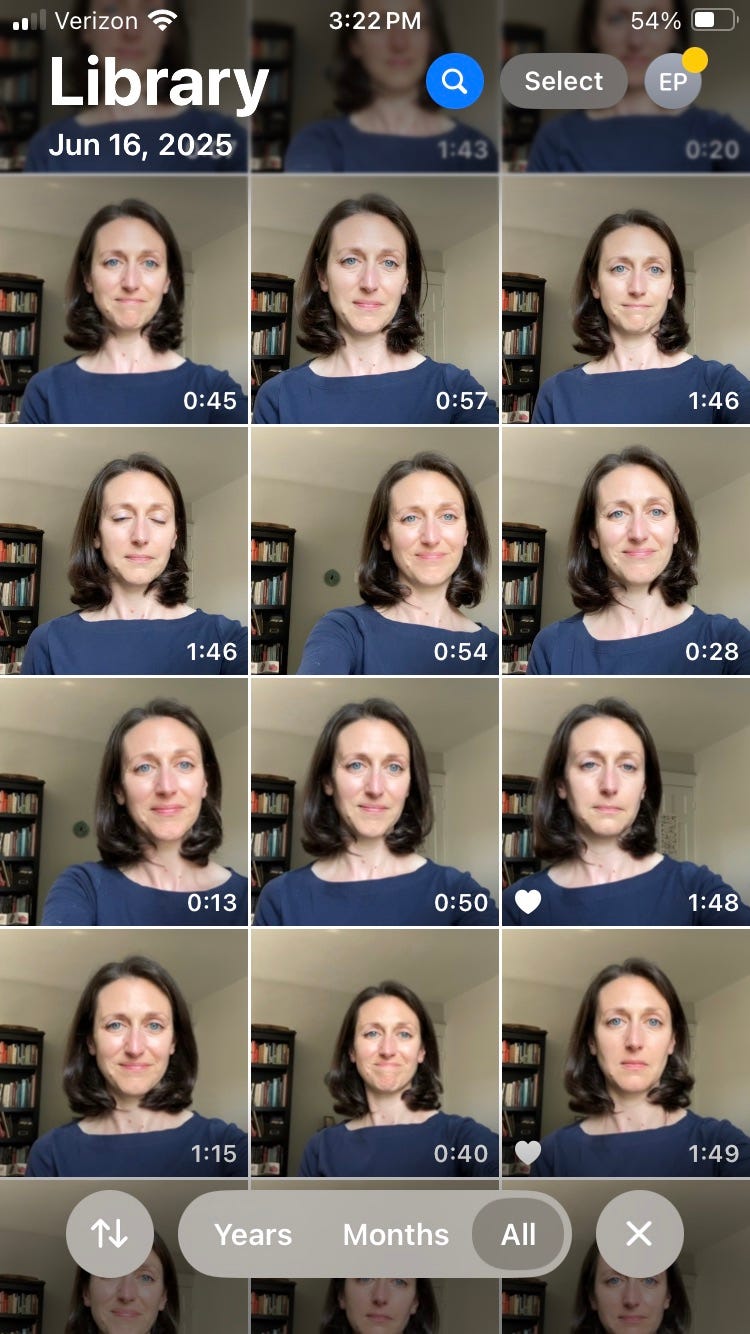
Hi, friends!
I hope everyone who’s experiencing a horrible heat wave this week manages to stay cool. Tomorrow I’m planning an agenda with my kids that includes making popsicles, eating popsicles, and staying indoors. And trying to keep my gardens alive??
What I’ve Been Working On
Tasks for my book are still coming, but they no longer involve writing. Earlier this month I received some sample page layouts to approve, which meant seeing fonts and other design elements for the first time. Everything looked amazing! Eek!
Now I’m working on scheduling some headshots with a photographer. Thank goodness a professional will be involved. Last week I recorded a promotional video that my editor had asked me for, and it took approximately one million tries for me to get a minute and fifty seconds that I didn’t feel terrible about.
Dear Inkfish
You keep talking about how people should have creative hobbies, so I took up screenwriting! Rather than wasting a lot of time learning the mechanics, I’ve been using ChatGPT to write scripts. Then I refine them however I like. I’m wondering if you have any tips about where I can submit my screenplays for publication, or how to find an agent?
—Bard 2.0
Wow! OK. Hobbies are great; screenwriting is cool; the Giant Plagiarism Machine is not my favorite, and I’m going to tell you why in the most succinct and least-jerky way I can, which will involve Sumatran orangutans.
First, generative AI tools were created by stealing and chewing up huge amounts of copyrighted text and images created by real humans (like me!). If those tools regurgitate anything that looks like art, it’s because of humans’ work. Like your iPhone in the middle of a text message, ChatGPT and the rest are just offering the most predictable answer to a question, which is both a bad way to search for facts and the opposite of creativity.
That’s not to mention that generative AI is cooking the planet even faster than it was already cooking. Or that in a recent study, people who wrote essays using ChatGPT became increasingly lazy and disengaged with their work. Oh! And talking to chatbots is making people psychotic.
Now that I’ve made myself upset, let’s please take a trip to the rainforest.
We humans aren’t the only animals who need to create. Like a college student facing new assignments each week, or a parent staring into their refrigerator when dinnertime comes around yet again, orangutans need to build themselves a new nest daily. In the wild, adults make a nest every single night, and sometimes another nest during the day for napping.
It’s not simple. They bend and weave branches together, sometimes across multiple trees, to make a platform. They line the platform with more branches and leaves. They may fashion a pillow out of foliage, and pull more leafy twigs on top of themselves as a blanket.
In a recent study, scientists saw that Sumatran orangutans learned to make their nests by “peering”—that is, looking over the shoulders of other orangutans who were building their own nests. Young orangutans watched their mothers, for years (an orangutan may stick with Mom until it’s eight or ten years old). As they got a little older, they started peering at other orangutans, too.
After watching someone else building a nest, the young orangutans practiced choosing and manipulating twigs and branches. They were most interested in watching the more complicated tricks, such as connecting branches across more than one tree, or adding pillows and blankets to their beds.
Just being in proximity to someone building a nest wasn’t enough to get the young orangutans practicing. The important thing was the peering: choosing to watch the process, step by step.
Orangutans are apes, like we are—and this result isn’t really a surprise, is it?
To learn to build a nest, apes need to observe how it’s built. If a machine came down from the sky and handed them a completed nest each night, of course they’d never gain the skill of making one. They also wouldn’t know whether the nest was any good, or how to adjust it to the materials they have available, or what leafy pillows are comfiest on their own heads. And this isn’t a great metaphor, but if their, you know…sky-machine WiFi broke, they would have to sleep on the ground.
We make our bed, and then we lie in it. If you want learn to write or create, starting with the finished product won’t help you. That’s because you’re not a machine but (thank goodness) a human.



